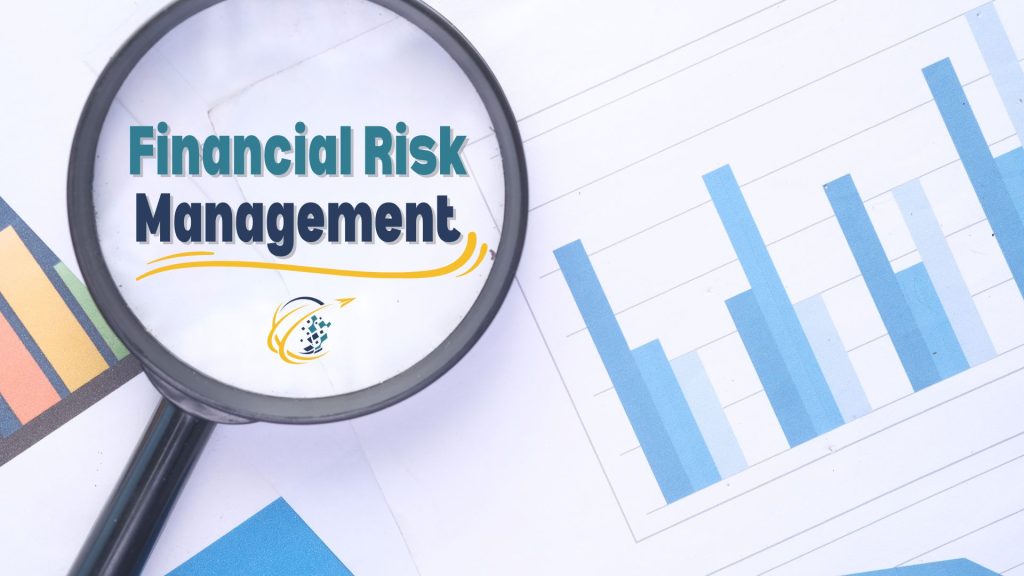Financial Risk Management is a critical discipline within corporate strategy. It focuses on identifying, analyzing, and mitigating risks that could negatively impact an organization’s financial health. This practice is essential for maintaining the stability and enhancing the profitability of businesses. It does so by ensuring they are prepared for potential financial uncertainties.
Moreover, effective Financial Risk Management enables companies to allocate resources efficiently. It also optimizes their risk-return profile and protects assets from potential threats. It also supports compliance with regulatory standards, thereby safeguarding the organization’s reputation and ensuring long-term sustainability.
Furthermore, by integrating risk management strategies into daily operations and decision-making processes, organizations can foster a risk-aware culture. This proactive approach not only minimizes losses in adverse scenarios but also provides a competitive advantage. This positions the company for successful navigation through volatile market conditions.
Types of Financial Risks
Understanding the various types of financial risks is fundamental to effective Financial Risk Management. Market risk, for instance, involves the potential losses from fluctuations in market variables. This includes stock prices, interest rates, and foreign exchange rates. For example, a sudden drop in interest rates can reduce the returns on fixed-income investments, impacting financial institutions’ profitability.
Credit risk arises from the possibility that a borrower may default on their obligations. This affects lenders such as banks and financial institutions. An increase in loan defaults can lead to significant financial strain and potential losses for these entities. This risk emphasizes the importance of thorough credit assessments and monitoring.
Liquidity risk refers to the difficulty a company might face in converting assets into cash without significant losses. This can be crucial in scenarios where quick asset liquidation is necessary to meet sudden financial obligations. This can potentially impact a business’ operational capabilities if not managed properly.
Operational risk is another critical area, encompassing losses from failed internal processes, systems, or external events. This includes everything from cyber-attacks disrupting operations to human error leading to data loss or financial discrepancies.
Each type of risk requires specific strategies for management and mitigation. It highlights the diverse challenges that businesses must navigate within the scope of financial risk management.
Risk Assessment Techniques
In Financial Risk Management, risk assessment techniques are critical for identifying, measuring, and assessing financial risks. Quantitative methods often involve statistical models and financial metrics to numerically estimate the probability and impact of risks. For instance, Value at Risk (VaR) is widely used to measure the potential loss in value of a risky asset. This provides clear metrics to guide decision-making.
Qualitative techniques, on the other hand, rely on expert judgment and scenario analysis to evaluate risks that are difficult to quantify. Through brainstorming sessions, workshops, and interviews, stakeholders can identify risks based on experiences and industry knowledge. These insights are then used to develop scenarios that help predict the outcomes of different risk events. This allows for more nuanced risk assessments.
Moreover, risk mapping tools are essential for visualizing the relationship between the likelihood of an event occurring and its potential impact. This helps organizations prioritize their risk management efforts based on the severity and probability of risks. By combining both qualitative and quantitative approaches, businesses can develop a comprehensive understanding of their risk landscape, crucial for effective risk management strategies.
Risk Mitigation Strategies
Effective Financial Risk Management requires deploying strategic measures to mitigate potential financial risks. Diversification is a key strategy, involving the spread of investments across various financial instruments, industries, or geographic regions to reduce exposure to a single source of risk. For instance, a company can invest in both real estate and stocks, balancing the risk across different market sectors.
Hedging is another crucial approach, using financial instruments like futures, options, and swaps to offset potential losses in an investment. For example, an importer expecting to pay for goods in a foreign currency might use currency futures to lock in today’s exchange rate, thereby minimizing the risk of rate fluctuations.
Insurance also plays a vital role in risk mitigation, providing a safety net by transferring risk to an insurance company. This can cover various risks including property damage, liability, and even business interruption, ensuring that the business can recover financially from unforeseen events.
Moreover, establishing risk limits is essential in controlling exposure to potential losses. This involves setting maximum loss thresholds that a company is willing to tolerate, which helps in maintaining financial stability and ensuring that the risks taken are commensurate with the company’s risk appetite and capacity.
Together, these strategies form the backbone of a robust risk management framework, allowing organizations to manage their financial exposures proactively and sustain their operations in the face of financial uncertainties.
Regulatory and Compliance Issues in Risk Management
Regulatory and compliance issues play a critical role in shaping Financial Risk Management practices within organizations. Key regulatory frameworks such as the Basel Accords are instrumental in setting international standards for banking regulation, focusing on risk management practices to ensure financial stability. These accords require banks to maintain adequate capital reserves proportional to their exposure to financial risks, enhancing the overall resilience of the financial system.
Furthermore, in the United States, the Dodd-Frank Act imposes rigorous risk management requirements for financial institutions. This includes mandates for stress testing and risk-based capital requirements, which ensure that firms have sufficient buffers to withstand financial shocks. Similarly, the Sarbanes-Oxley Act requires public companies to implement internal controls for financial reporting, aiming to reduce the risk of corporate fraud and increase transparency.
Compliance with these regulations is overseen by various regulatory bodies, such as the Federal Reserve in the U.S., which conducts regular inspections and reviews to enforce adherence. Non-compliance can lead to severe penalties, making it crucial for businesses to rigorously implement risk management standards and practices.
These regulatory frameworks and compliance requirements not only protect the financial system but also promote trust among investors and stakeholders by ensuring that organizations manage their financial risks effectively. This oversight is essential for maintaining the integrity and efficiency of financial markets.


